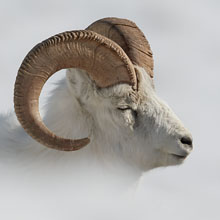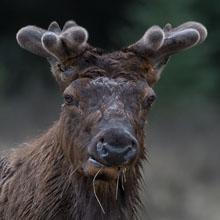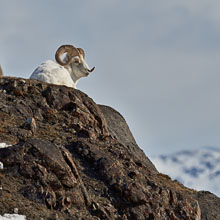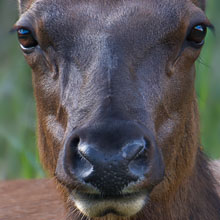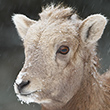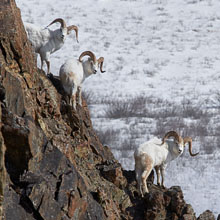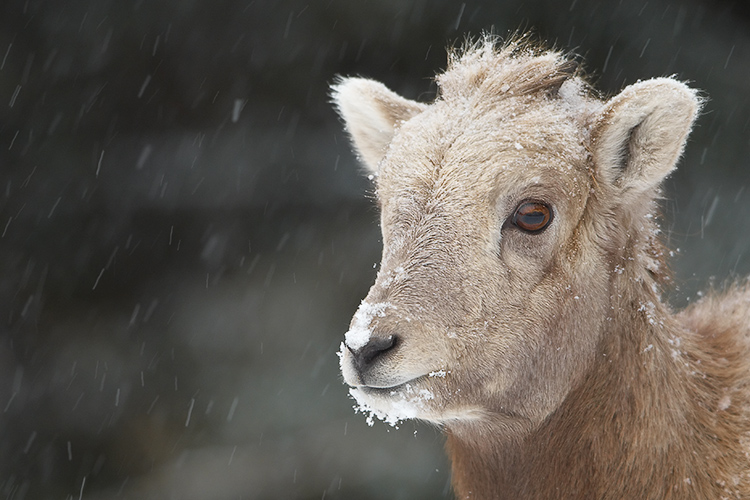
In the Field
First Snow. Radium, BC, Canada. November 6, 2005.
I shot this image during the first snowfall of the autumn in 2005. I found myself wondering what this young Bighorn thought about the snow - it had been born the previous spring and it was likely that this was the first snow it had experienced. I'm sure I'll never know, but, given its nonchalant behaviour, it really didn't seem put out at all!
When photographing wildlife in snow (or rain) I try to use moderate shutter speeds (somewhere between about 1/30s to 1/90s). If you use higher shutter speeds you tend to "freeze" the motion associated with the snowflakes (or raindrops) and they appear almost unnatural. With lower shutter speeds you increase the probability that the animal will move and be blurred in the final image or that camera shake will ruin your image.
Behind the Camera
First Snow. Radium, BC, Canada. November 6, 2005.
Digital Capture; Compressed RAW (NEF) format; ISO 200.
Nikon D2X with Nikon 200-400 mm f/4G ED-IF AF-S VR lens @ 340 mm (510 mm equivalent with digital conversion factor) supported on bean bag. VR turned to "On" and in "Normal" mode.
1/60s @ f4; no compensation from matrix-metered exposure setting.
At the Computer
First Snow. Radium, BC, Canada. November 6, 2005.
RAW Conversion to 16-bit TIFF, including first-pass sharpening and tone curve adjustment, using Phase One's C1 Pro.
All further digital correction on 16-bit TIFF file using Adobe's Photoshop CS, including additional tone curve adjustment, selective saturation enhancement and selective sharpening for web output.
Conservation
First Snow. Radium, BC, Canada. November 6, 2005.
Species Status in Canada*: This species is not designated as at risk.
Bighorn Sheep (Ovis canadensis) are considered by many to be a symbol of mountain wilderness. They are distributed throughout much of the mountainous areas of western North America from central British Columbia south to northern Mexico. Local distribution of Bighorns appears to be limited by the availability of suitable foraging areas near "escape" terrain (cliffs or very steep terrain where they can escape predators).
*as determined by COSEWIC: The Committee on the Status of Endangered Wildlife in Canada


















